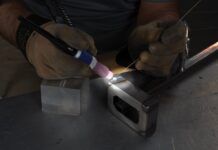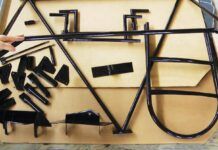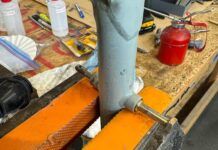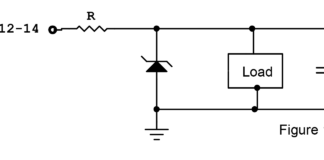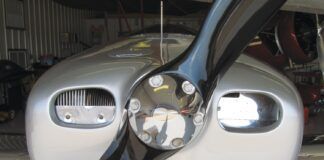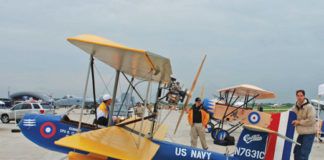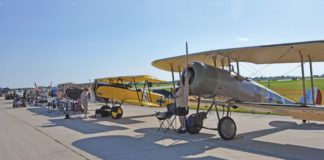KITPLANES Magazine, March 2003
Every great homebuilt starts with a comfortable and efficient workshop.
By Ken Scott
So you’ve met the homebuilt airplane of your dreams, and it’s made of riveted sheet aluminum. That’s a new and intimidating idea, you think. Over the years, you’ve stuck some pieces of steel together with a welder, repaired your fiberglass boat and built wood furniture. But aluminum? All those rivets? One of the biggest decisions you’ll have to make is whether you are going to apply spray paint or primer in your shop. If you are, you will need a spray facility. A full, professional booth is not necessary. If you’re just priming small parts, something as simple as a cardboard box equipped with a screen, furnace filter and fan will suffice. However, protecting your body is extremely important. Tyvek “bunny suits” and fresh-air breathing systems are much better than simple respirators. They aren’t cheap, but if the price gives you pause, check out the cost of new lung tissue on the market today. Tools Once you have the shop, you’ll need the right tools. If you are building from a modern kit, say, a Murphy Rebel or a Van’s RV-7, the only large stationary tools you really need are an air compressor, a bench grinder with a 6-inch Scotchbrite polishing wheel and a good vise.
Relax. Thousands of people have built metal airplanes, and they’ll all tell you that it’s the easiest way to do the job. Just like with any other construction material, it’s simply a matter of having the right space, the right tools and the right approach. First, you need a shop. It doesn’t need to be vast-metal airplanes come in small pieces, and many have been built in spaces smaller than a one-car garage. All you need is enough space to walk completely around subassemblies like fuselages or wings. There are two other aspects that are more critical than size: comfort and convenience.
The typical shop, whether it’s a garage or a basement, has a concrete floor. It’s easy to sweep or vacuum, but it’s hell on feet and shins. Give your legs a break, and put down rubber padding like what’s used in restaurant kitchens or, at the very least, some old carpet. Carpet has an added bonus-you’re going to drop a lot of nuts and bolts before this thing flies, and if they land on a rug, they’ll stay where you can find them. On concrete, they go pinging off into the alternate universe of single socks and ball-point caps.
You will need a good but not huge workbench. The most common mistake is to build a workbench that’s too large and ends up becoming a junk collector in the middle of the workshop. For most airplanes, a 3×6-foot or 3×7-foot bench is plenty. Make it sturdy, and cover the top with a sheet of high-density -inch particle board-you will drill directly into this surface many times. Leave a 3-inch overhang all the way around so you can clamp pieces to it.
Once it’s comfortable, there are several tricks for making the shop convenient. You will generally have a big structure, like a fuselage or wing, in the middle of the shop. Many tools will be operated by air or electricity, so plumb air around the shop with galvanized or heavy-wall plastic pipe, and provide many convenient electric outlets. Put air and electric cord “drops” in the ceiling to avoid the awkward pirouette you’d have to make every time you walked by cords or hoses stretched between the walls and the airplane.
Overhead racks will give you a safe and convenient place to put the long aluminum skins, spars and longerons. Hanging tools on the walls will let you grab what you need without digging in space-robbing toolboxes. You’ll also need about 200 plastic organizer drawers with permanent labels-airplanes use more kinds of hardware than you’d believe. Choose units that fasten to the wall, and have some sort of internal catch that prevents pulling the drawer out accidentally.
The compressor can be a typical 20-gallon, 2-hp unit. Volume is more important than pressure. If you are spraying paint or using air drills, which use a lot of air, you can plumb another tank into the system rather than pay for a larger compressor. Mount the grinder and vise on movable pedestals, where they will be many times more useful than if they were mounted on a bench.
If you are building from a less advanced kit, you may want a drill press and perhaps a band saw and a router table. None of these needs to be massive-you’re building an airplane, not a ship. Take the time to put them on rolling stands so you can pull them into the center of the shop and work on long pieces. If you are building from scratch, a combination 4-foot sheet metal brake/shear will become your best friend
Comfort
Comfort is often overlooked, but it shouldn’t be. If your shop is too hot, too cold or too claustrophobic, you won’t do good work there. A typical project will span several seasons, so heat or air conditioning is important depending on your climate. Choose a source that doesn’t cause fumes and is as quiet as possible. Insulate the workspace, caulk the window frames, and weather-strip the doors. (Powdered snow swirling in under rotten garage door seals is a powerful deterrent to airplane building.) This way, you can keep utility costs to a minimum and spend your money on your airplane.
Aluminum is shiny stuff, and bright point sources of light can produce eye-watering reflections. Cheap 4-foot shop lights are often on sale at home improvement stores, but for only slightly more money, you can save yourself a lot of headaches by using light-balanced florescent fixtures with plastic diffusers that soften and spread the light.
Aluminum airplanes have lots of holes. Virtually all use 3/32-inch and 1/8-inch rivets, which are inserted into #40 and #30 American Wire Gauge (AWG) holes. A couple of dozen 3-inch jobber-length drill bits and a few 6- and 12-inch bits in each size will get you through most projects. Be sure to buy split-point drill bits to avoid ugly worm tracks.
To spin the bits, any fairly fast drill motor will work. Air drills are traditional, but more and more airplane builders are using newer battery drills these days. You can buy two or three drills and set them up with different bits to save time. Once the holes are drilled, components are held together with temporary fasteners called Clecos. These are inserted with special pliers-get at least two pairs. There’s no such thing as too many Clecos, but 400 of the silver 3/32-inchers, 250 of the copper 1/8-inchers and a dozen of the bronze 3/16-inch ones will get you started on an RV. For a really big structure like a Bearhawk wing or a Super Rebel fuselage, you may want more.
Fast airplanes use flush rivets, which means the skins must be countersunk. In thick metal, an adjustable machine countersink tool with a single flute cutter produces excellent results. You’ll need one, but you’ll want two. Many skins are too thin to cut metal away, so the countersink is formed by pounding a rivet-shaped dent into the aluminum with dimple dies. You’ll need a set of dies for each size of flush rivet in your airplane. Another indispensable tool is a dimpling arbor. It will accurately align the dimple dies and reach to the center of even big wingskins.
For a good number of builders, the most anguish is expended over the choice of a rivet gun. Guns are rated by size: 2x, 3x, 4x. The bigger the number, the harder it hits. For the 3/32- or 1/8-inch rivets used in most homebuilts, the common consensus seems to favor the 3x. If you are setting rivets 3/16- or 1/4-inch, you’ll need a 4x. A good gun should have a teasing trigger that makes it easy to control, and it should come with several interchangeable tips called sets. Which sets you need depends on the kind of rivets used on your airplane.
The rivet gun’s partner is the bucking bar. This is simply a chunk of mild steel with polished faces. Most builders have six or eight bars of different sizes and shapes that will reach into the odd nook and cranny. But not all rivets are set with a gun. A rivet squeezer is essential. It will accept dimple dies, too. Most squeezers are hand operated, but more and more pneumatic squeezers are making their way into homebuilders’ shops. Expensive, but really cool!
If your airplane is held together with blind rivets, a pneumatic blind riveter is a must in your workshop.
Every kit manufacturer has a list of necessary tools, and the success of metal homebuilt designs has given rise to several excellent tool retailers where a newbie tin-basher can get excellent advice.
And, of course, there are many, many more tools than a single article can list. If it all seems a little overwhelming at times, just remember that Christmas comes every year, and so does your birthday and your anniversary and Father’s Day and Valentine’s Day and…







